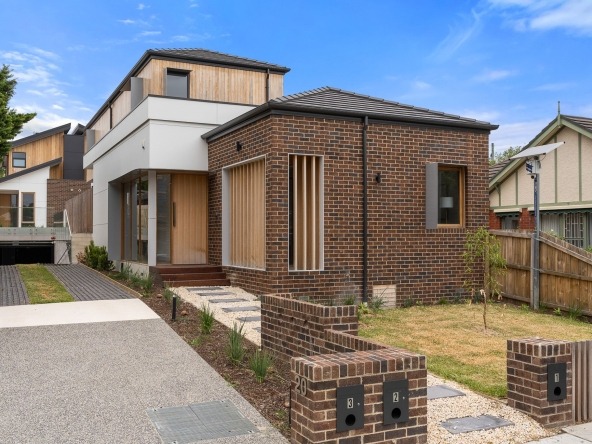Buying property can be fun and exciting. If you have a plan or guide. Here is a manual guide outlining seven important to the buying process of purchasing off the plan:
Step 1: Budget, Research and Plan. Talk to us.
Its crucial to budget, research, and plan before purchasing any property in Australia. You may have decided on a location or a property, but it’s always helpful to speak to one of our agents (also known as a buyers’ advocate) for information and advice.
We provide property options based on our clients’ budget and financial statues. We have a great record of testimonials and google reviews too.
Here is an article on 5 x important steps to buying your first investment property:
Step 2: Establish your team of professionals
The next step in the buying process is sSelecting and buying the most suitable property is going to be time consuming and complex. It is necessary to employ a team of professionals to assist you throughout the process. This will enhance your buying experience enjoyment, simplify the process and reduce any unknown risk.
Real estate Agent (buyer’s advocate like us):
A buyer’s advocate is a professional that helps and sources properties for the buyer. A traditional real estate agent acts in the best interests of the vendor, aiming to sell their property at the highest possible price. We work on the other side… your side. As we specialise in brand new and off-the-plan properties, we have a diverse contact list. We have access to some of the finest new properties, Melbourne has to offer. We work with you to source an off-market properties that is unique and well suited to you.
Please refer to this article on 5 x reasons why a property adviser is needed:
Conveyancer:
A conveyancer or a solicitor is going to help you thoroughly investigate the property, manage the transfer of ownership and review the contract before signing it. It is ideal that the conveyancer or solicitor is impartial and independent to the transaction.
Mortgage broker:
Mortgage Brokers also known as finance brokers must hold an Australian Credit Licence (ACL) and are also a member of both the Mortgage and Finance Association of Australia (MFAA) and the Credit and Investments Ombudsman (CIO).
An experienced mortgage broker will have a panel of lenders and loan products to choose from. This ensures you’re getting the best mortgage for your situation and needs. These professionals can also assist non-resident clients apply for loans.
To further elaborate on the importance of a mortgage broker, please refer to this article on Things to look for choosing your broker.
Accountant (if required):
A local accountant brings many benefits to your team. An accountant can assist handling complex taxation system in Australia. They can help arrange tax returns. assess land taxation, stamp duty, foreign citizen stamp duty, capital gains tax and taxes for leaving your property vacant.
Some investors have complex financial circumstances. Implementing various tax entities such as a discretionary trust may provide great value in asset protection. An accountant can establish various tax structures to cater your needs.
An accountant can also provide calculations on your eligible tax depreciation. Many properties receive this tax benefit. The new the property, the higher the tax depreciation.

Step 3: Obtain a loan pre-approved
A loan pre-approval is the foundation of buying a property and a very important part of the buying process. A formal pre-approval from a lender provides you with a guideline as to what you can spend. This is your maximum ceiling amount and should be taken literally.
The pre-approval will also provide guidance around the proposed loan repayments, interest rates, fees etc. A loan pre-approval may only last three months, but understanding your maximum borrowing capacity before committing will provide great peace of mind going forward.
Once your budget is set, we then work with you to source an appropriate budget that is affordable.
As the property undergoes construction, we liaise with your mortgage broker and ensure you are commencing your loan applications up to three months prior to settlement.
To further elaborate please refer to this article for more information ‘Why a loan pre-approval is so important‘, .
Step 4: Applying for a loan
Applying for a loan can be challenging. This is for both resident and non-resident investors. The lending criteria can be very complex. Hence the need to have a mortgage broker working with you.
For local buyers, you’ll need to prove your identification, income and employment, while provide tax returns, bank statements and other financial documents.
For non-resident buyers, these requirements aren’t to much different. However your visa and residential status will play an important contribution.
As highlighted earlier, we can recommend a mortgage broker to help you simplifying and understanding the processes.
Step 5: Find out your entitlement of First Home Owner Grant (FHOG)
The first home owner grant (FHOG) was introduced to offset the effects of the GST on home ownership. It is a one-off payment to first home owners that fit the eligibility criteria. Each state of Australia has different eligibility criteria and grant payment. Please refer to Australian government website (http://www.firsthome.gov.au/) or talk to us for more information.
Step 6: Confirm you qualify with the FIRB
Under Australian law, foreign buyers or temporary residents are legally required to get permission from the Foreign Investment Review Board (FIRB) before any purchases. Buyers with Australian citizenship, or Australian permanent residency or New Zealand citizenship don’t need approval from the FIRB. The exemption also applies when joint purchases take place between foreign buyers and their Australian/New Zealand partners for their primary home.
Step 7: Let’s buy it!
As you have established your actual budget, organised your finance and confirmed your qualification with FHOG or FIRB. You can finally start the process of purchasing a property.

The off the plan buying process consists of seven steps:
1. Find a property:
We provide private meetings to listen to your needs, help you establish your purchasing goals and provide property opportunities tailored to your profile. We only recommend properties that we would buy ourselves. Furthermore, we challenge and raise your awareness to every aspects of each selected property. For example we won’t buy a property without a car space. There are many reasons why this contributes to capital growth, liquidity etc. We have written an article on this. Please refer to Can a car space add value?
2. Review and sign a contract of sale:
the next step to buying off the plan is to collect the contract of sale from the developer and forward it to your conveyancer or solicitor to review. Once reviewed, we help navigate the signing process and ensure you have a copied to keep.Under Australian law, contract of sales for off-the-plan property must be fulfilled. All off-the-plan contracts have an ‘unconditional status’ upon signing. Knowing you have worked through the prior steps, then you are set to be a property owner!
3. Pay the deposit:
Once the contract of sale has been counter signed by all parties, you’ll need to pay property deposit to the value of 10% of the purchase price. These funds are held in a legal trust are retained until settlement has been reached. The property will be legally reserved to you until the property is finished construction and the rest of the money is paid.
4. Construction phase:
While you are waiting for your future home or investment property to be built, we provide photos and video updates on site keeping you notified and ready. As each stage of construction is reached, we send you a private message.
5. Commence your formal loan:
Approx. 2 – 3 months before the construction is finished, we will contract and remind you to submit to your loan application with your mortgage broker.
6. Property Inspection:
As the property reaches practical completion, we get the honour of walking you through your property prior to settlement. This opportunity allows you to review the property for defects so the builder to rectify them prior to settlement.
7. Settlement:
Once you have officially paid for your property, the title will be transferred in your name. Last but not least – we will go pick up the keys and celebrate with you!
While we have taken care to ensure the information above is true and correct at the time of publication, changes in circumstances and legislation after the displayed date may impact the accuracy of this article. If you want to learn more please contact us. We welcome the opportunity to assist you.
February 2019













